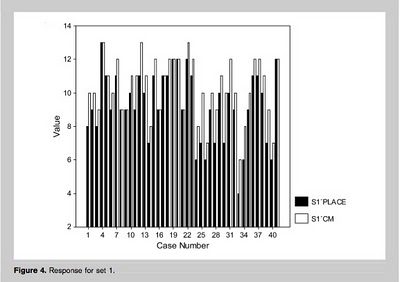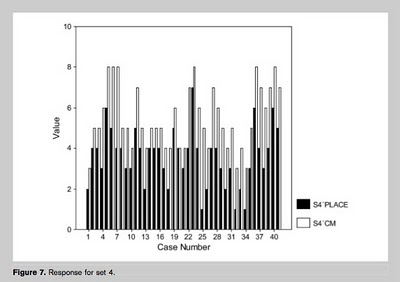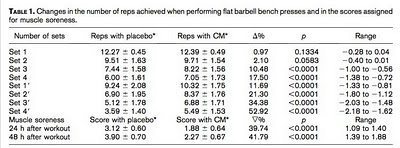How much would you pay for 2 more reps at the end of your workout?
 The concept of progressive overload is a cornerstone to any weight-training program. Lifting more weight, or lifting the same weight for more reps is the goal that is theorized to produce muscle growth, or better performance (however you decide to measure that).
The concept of progressive overload is a cornerstone to any weight-training program. Lifting more weight, or lifting the same weight for more reps is the goal that is theorized to produce muscle growth, or better performance (however you decide to measure that).
Citrulline malate has been an ingredient in a multitude of sport supplements. It is theorized to work through 3 proposed mechanisms: 1) malate is proposed to accelerate ammonium clearance and citrulline is proposed to facilitate lactate metabolism (these effects however, were noted in microbial models, i.e. germs in a dish); 2) citrulline malate has been noted to protect against acidosis which is proposed to counter fatigue; 3) Citrulline malate is proposed to increase nitric oxide production, which has been shown to have many potentially physiologically beneficial effects (though none of these effects may affect the stuff you’re concerned about like muscle growth, fat loss, or any performance benefit).
So, basically, if you were to consider taking citrulline malate, it would be for the fatigue-resistant properties mostly, and a potential side-benefit of increased NO production (a topic for a review in the future)
The researchers in this study therefore, wanted to see if the proposed claims of citrulline malate supplementation had any effect on muscle fatigue and the perception of muscle soreness, using a bench-press as the main test of interest.
Perez-Guisado J, Jakeman PM. Citrulline malate enhances athletic anaerobie performance and relieves muscle soreness. Journal of Strength and Conditioning Research, 24(5):1215-1222, 2010.
Methods
This study took place in Spain and recruited subjects from 6 gyms. It was a randomized cross-over trial, which means that all subjects went through the testing twice with a washout period in between the two testing sessions. Each subject would have received either citrulline malate or a placebo the first time around, and then the one they didn’t get the second time around.
To participate in the study, subjects had to be weight training for at least 3 hours per week, with a program that included the flat bench press. They had to avoid other sporting activities during the study and had to sign statements that they had never used anabolic steroids in the past, and had not used creatine, HMB, or thermogenics in the past 8 weeks prior to the study.
All the subjects had their 1RM tested for the flat barbell bench press. To measure fatigue, the subjects were asked to perform 4 sets of bench press at 80% of the 1RM at the beginning of a chest workout, and then 4 sets of bench press at 80% of the 1RM at the end of the same workout. The number of reps performed in each set was recorded.
The chest workout consisted of the initial 4 sets of testing at 80%1RM, followed by 4 sets of incline bench press at 80% of the 1RM of the flat bench press, and 4 sets of incline flyes at 60% of the 1RM of the flat bench press. Tempo was 1-2 seconds on the concentric and 1-2 seconds on the eccentric. Rest between sets was standardized in the program. Subjects were asked to avoid caffeine before the workouts, and all workouts were done at the same time each day for each subject (but not all subjects did their workouts at the same time as each other). Every set was taken to muscular failure.
Each subject drank a pre-workout beverage one hour before the workout. Each drink was 200mL in volume with similar appearance, smell, consistency and taste. The citrulline drink had 8 grams of citrulline malate in it. The person who made the drinks was different from the person who did the testing.
In addition to fatigue testing, the subjects were asked to rate their degree of muscle soreness 24 and 48 hours after testing from 1 to 5, 1 being no soreness and 5 being maximum soreness with physical disability for immediate training (i.e. I’m too sore to work chest today). But I’m not going to get into these results in this review, as they are peripheral to the main issue.
Statistics
To test if the difference observed between the two trials was attributable to chance or not, the researchers used ANOVAs. The muscle soreness score was compared using the Wilcoxon signed rank test. The researchers also tested “responders” vs “non-responders” using a Fisher Exact test (but they didn’t report how they defined who was a responder or a non-responder).
Results and Discussion
While the design of this trial wasn’t bad, the reporting of results was incredibly confusing, as you will soon see. I think there’s limited utility in presenting individual data unless you can do it in a really clear and concise manner. A series of squished up histograms is really hard to read, even up close and doesn’t help to clarify the data. It’s like saying you’ve found the needle in the haystack, but only provide a photo of the haystack.
Forty-one men were recruited to participate in the study. Average weight was 81.12 kg (SD 17.43 kg) (that’s about 180lbs) and average age was 29.8 (SD 7.54). The subjects trained for an average of 6 hours a week plus or minus 2 hours, and did 4 (give or take 2) workouts per week.
The meat of this study is in Table 1. You’ll see how seeing the raw data makes the issue totally confusing. Here’s the data for set 1 and 4 post-workout (notice also the change in scale in the y-axis):


Almost completely useless, eh?
Here’s table 1:

What we see here is also a bit of a mess of numbers with odd labels. I would encourage you to avoid staring at all the really low p-values. What you should be paying attention to is the last column which is the 95% confidence interval for the difference in reps performed between placebo and citrulline malate, as well the actual numbers in the reps columns with placebo and citrulline malate.
Sets 1 to 4 are the pre-workout sets. Sets 1′ to 4′ are the post-workout sets after 8 sets of chest stuff with each set taken to muscular failure.
On average, it looks like there aren’t really any meaningful differences in the number of reps these guys could squeeze out until set 2′ or even set 4′. While the investigators were able to demonstrate statistical significance between the two trials for almost all of the sets, practically speaking, I don’t consider 1 extra rep to be really meaningful–even if it’s one extra rep over 3 sets. In total, you might accrue 4-5 extra reps over 4 sets. The confidence interval gives us a range of plausible values that you might get if you did the same experiment again and again. So, by this data, at the best, citrulline malate might eke out 1-2 extra reps per set.
What is striking is that the biggest differences in fatigueability don’t really appear until after set 2′, which is actually 14 sets into the workout. So, if you were to take citrulline malate, you would be taking it mostly for the last few sets of a typical workout–provided you had already worked that particular muscle group (that you were trying to get the extra reps on) already to muscular failure on previous sets.
Of course, the unanswered question is whether eke’ing out a few more reps at the END of a workout has any benefit from a performance or aesthetic perspective. My take on it is that citrulline malate costs between 20 and 35 dollars for a 200 gram container. Their recommended serving size is 2 grams, but according to the dose in this study, you would need to take 8 grams (though we don’t know if there is a dose-dependent effect). Roughy, that’s about a dollar per dose (if you’re going to dose it at 8g). In the grand scheme of things, that’s not a lot of money for a lot of people.
So what it comes down to is your willingness-to-pay and whether the marginal number of reps you _might_ get at the end of a workout (in which you had already essentially exhausted the muscle ALREADY) contributes all that much to your progress. Theoretically, descending sets might accomplish the same thing for free, given that you could probably produce the same amount of “work” (instead of doing the extra 2 reps at 100 pounds, you could do 4 reps at 50 pounds, to use an arbitrary number of pounds). This, of course, doesn’t take into consideration that most reputable trainers would not recommend training to true muscular failure, but instead generally get their clients/athletes to train to technical failure (which is not studied in this paper.)
Bottom line: If you think you’re that optimized (and I’d venture to say the vast majority of weight-trained folks aren’t) that an additional 2 reps at the end of a very intense workout is going to make or break your improvement (either weight/rep or looks-wise), you could try citrulline malate. Otherwise, you’re probably doing just fine without it.